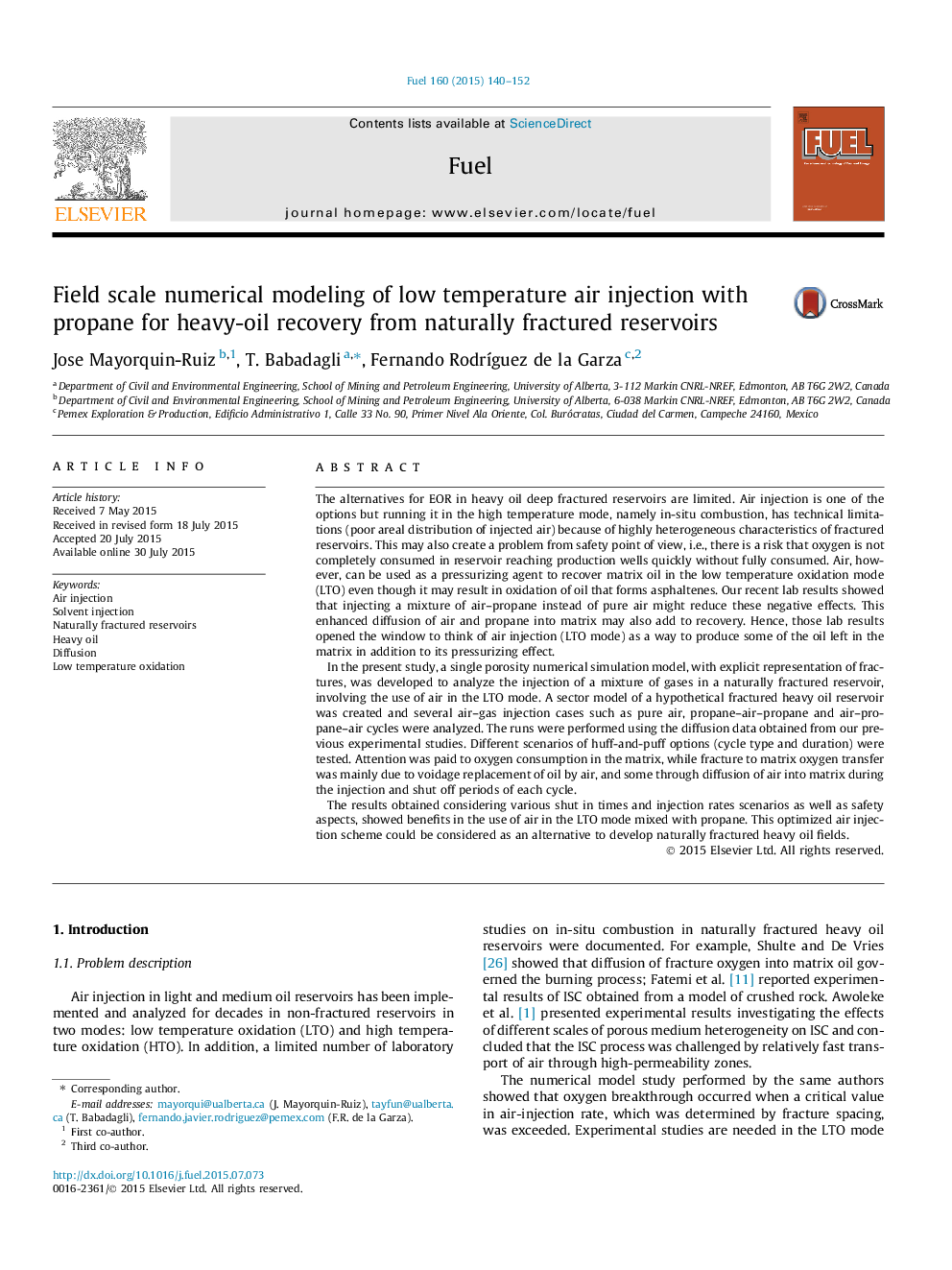| کد مقاله | کد نشریه | سال انتشار | مقاله انگلیسی | نسخه تمام متن |
|---|---|---|---|---|
| 205536 | 461112 | 2015 | 13 صفحه PDF | دانلود رایگان |
The alternatives for EOR in heavy oil deep fractured reservoirs are limited. Air injection is one of the options but running it in the high temperature mode, namely in-situ combustion, has technical limitations (poor areal distribution of injected air) because of highly heterogeneous characteristics of fractured reservoirs. This may also create a problem from safety point of view, i.e., there is a risk that oxygen is not completely consumed in reservoir reaching production wells quickly without fully consumed. Air, however, can be used as a pressurizing agent to recover matrix oil in the low temperature oxidation mode (LTO) even though it may result in oxidation of oil that forms asphaltenes. Our recent lab results showed that injecting a mixture of air–propane instead of pure air might reduce these negative effects. This enhanced diffusion of air and propane into matrix may also add to recovery. Hence, those lab results opened the window to think of air injection (LTO mode) as a way to produce some of the oil left in the matrix in addition to its pressurizing effect.In the present study, a single porosity numerical simulation model, with explicit representation of fractures, was developed to analyze the injection of a mixture of gases in a naturally fractured reservoir, involving the use of air in the LTO mode. A sector model of a hypothetical fractured heavy oil reservoir was created and several air–gas injection cases such as pure air, propane–air–propane and air–propane–air cycles were analyzed. The runs were performed using the diffusion data obtained from our previous experimental studies. Different scenarios of huff-and-puff options (cycle type and duration) were tested. Attention was paid to oxygen consumption in the matrix, while fracture to matrix oxygen transfer was mainly due to voidage replacement of oil by air, and some through diffusion of air into matrix during the injection and shut off periods of each cycle.The results obtained considering various shut in times and injection rates scenarios as well as safety aspects, showed benefits in the use of air in the LTO mode mixed with propane. This optimized air injection scheme could be considered as an alternative to develop naturally fractured heavy oil fields.
Journal: Fuel - Volume 160, 15 November 2015, Pages 140–152
